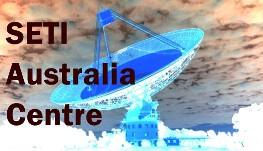 |
|
 |
|
INTRODUCTION
The aim of this paper is to give a brief overview of Australian participation and activities in the Search for Extra-Terrestrial Intelligence. In doing so we realise that many SETI endeavours are global in scope. We thus include in our definition of 'Australian' those people and activities who originated in Australia, carried out SETI activities while in Australia or for some other reason have a strong tie to Australia.
Australians, along with most other peoples, have an interest in the question of other life in the Universe. Although SETI did not originate in Australia, several global projects have and or will use Australian facilities. One of the advantages of SETI 'down under' is that our sky passes under the centre of the galaxy. Of the approximately 5,000 stars that are visible to the naked eye, 3,000 of them can be seen from southern hemisphere mid-latitudes, whereas only 2,000 are visible from the northern hemisphere. This gives an indication of the greater astronomical diversity that Australians enjoy, and possibly implies a greater chance of success in SETI.
BACKGROUND
The first modern proposal to make a technological search for extraterrestrial intelligence was made by the Cornell physicists Giuseppe Cocconi and Philip Morrison in a paper to the British science journal Nature in 1959. They wrote:
"The reader may seek to consign these speculations wholly to the domain of science fiction. We submit rather that the foregoing type of argument demonstrates that the presence of interstellar signals is entirely consistent with all we now know and that if signals are present the means of detecting them is now at hand. Few will deny the profound importance, practical and philosophical , which the detection of instellar communication would have. We therefore feel that a disciminating search for signals deserves a considerable effort. The probability of success is difficult to estimate; but if we never search the chance of success is zero."
Cocconi and Morrison estimated that within a range of 50 light years from the Earth there might be as many as 100 stars which possess a habitable planet. They suggested that the best chance of success would be to search around the 21cm hydrogen line, a fundamental cosmic radio frequency surely known to any advanced civilisation.
|
It took 11 years, until 1960, for the radio astronomer Frank Drake at the US Green Bank radio observatory to instigate the first such search.
He made a series of observations at 21 cm using a 26 m radio telescope pointed in turn at several nearby stars. The project was named Ozma after "The Wizard of Oz" which described a faraway land inhabited by strange creatures. Drake was also famous for the equation of his name which allowed the calculation of the probability of success in such communication. Image at right: Frank Drake and the Project Ozma Antenna. Credit: Ian Morrison |
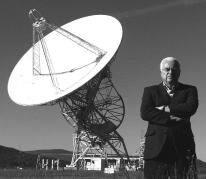
|
It would take another 19 years before the first Australian search for extraterrestrial intelligence was made.
AUSTRALIAN SETI PROJECTS
The following list is organised chronologically.
1979
What we currently believe was the first Australian attempt at a SETI search was made by Trevor Cole and Ron Ekers using the Parkes radio telescope. In a bold move, they suggested that a search for pulsed signals might be more profitable than a search for narrow-band beacons around the hydrogen line. It is only recently that some have again suggested that we should be looking for wide-band signals, so not only was this the first Australian search but it was probably ahead of its time with the first 'wide-band' search.
Over 50 hours of observing time were spent searching for signals from globular clusters, X-ray sources, the Magellanic Clouds and the Galactic Centre. Only one possible signal was detected which could not be explained as a natural source or as radio frequency interference (RFI). This signal came from the direction of 82 Eridani (Eri), a star that is 20 light years away. In their paper Cole and Ekers [1979] state that the signal was "not attributable to lightning, and is the only non-explicable event seen in three days of observing". Following this initial observation, a further four hour session was devoted to 82 Eri but failed to detect a repeat signal. [ Cole & Ekers, 1979 ]
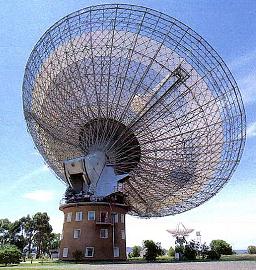
| The giant steerable dish CSIRO radio telescope located near the town of Parkes in central New South Wales. This has been the telescope of choice for many Australian SETI projects. |
1983
In 1983 the largest (64m) dish at NASA's Deep Space Network centre at Tidbinbilla near Canberra was shut down for repairs to its pedestal. A group of researchers (Gulkis, Kuiper, Olsen, Jauncey and Peters) persuaded NASA to leave the telescope's X and K band receivers ( 8 and 22 GHz) to remain connected and operational so that they could be used for SETI observations. A 256 channel spectrum analyser was constructed with funding from the Planetary Society, and data was recorded to tape for later analysis at JPL. The antenna was fixed in direction for days at a time, although it could be moved when the repair schedule allowed. Multiple samples were taken in each sky direction as the Earth's rotation swept the same patches of sky through the antenna beam. This was helpful in the identification of real signals from RFI. No detections resulted from this search.
1989
A team of Ray Norris, Kel Wellington and Alan Wright from CSIRO on the east coast of Australia together with David Blair, Andrew Williams and Mario Zadnik from the west coast started a new program to monitor a number of stars at several different frequencies. Using the Parkes radio telescope, the largest Australian single-dish telescope and the workhorse of all Australian SETI, Blair led the team on a targeted search of 100 nearby solar-type stars, many of them visible only from the southern hemisphere.
The search was conducted at frequencies between the 21cm hudrogen line and the 18cm hydroxyl line (assuming that any target civilisations would also be interested in these two components of water). In particular they monitored 4.46 GHz, which is the 21cm hydrogen line frequency multiplied by the mathematical constant π. Observations used the Parkes Observatory correlator and an HP Spectrum Analyser to give 512 channels each with a bandwidth of 100 Hz. Frequency offsets were made for 3 inertial reference frames: (1)the target star barycentre, (2)the solar barycentre, and (3)the Earth's centre. Analysis was made in real time so that any signals detected could be reobserved as rapidly as possible. During one time when Andrew Williams was on shift, a signal was detected that was not natural. It lasted long enough to determine the sky location of the signal, but repeated observations of this location were unsuccessful. The project lasted until early 1991. [ Blair et al, 1990 ]
1995
Project Phoenix was a SETI project funded by the SETI Institute of Mountain View, California. It had a southern and a northern hemisphere component. The southern component went from February to June of 1995 using the Parkes radio telescope. Later, from September 1996 to April 1998 it used facilities at the National Radio Astronomy Observatory (NRAO) in Green Bank, West Virginia, the place where Frank Drake made the first search in 1960.
Rather than attempting to scan the whole sky for signals, Project Phoenix concentrated on nearby stellar systems similar to our own. They examined about 800 stars within a range of 200 light years. They searched for narrow-band signals (Δf ~ 1 Hz) in the frequency range from 1 to 3 GHz. This was then a very broad bandwidth compared to previous searches.
In March 2004 the Project announced that it had failed to find any evidence of extraterrestrial signals. Peter Backus, the project leader remarked that they had been forced to conclude that "we live in a quiet neighborhood".
1995
On June 8 and 9, using Project Phoenix equipment, Seth Shostak, Ron Ekers and Bobbie Vaile aimed the Parkes radio telescope at the Small Magellenic Cloud. A previous (US) search by Carl Sagan and Frank Drake in 1974 had done a search in M31, the nearest spiral galaxy in Andromeda. Shostak et al reasoned that as the SMC was only one tenth as far as M31, signals should be 100 times as strong, and the large stellar population of the SMC gave a better chance of detection than just looking at individual stars within our galaxy.
No narrowband signal (< 1 Hz), continuous or slowly pulsed emission was detected at a level greater then 19 Janskys ( 1 Jy = 10-26 W m-2 Hz-1 ) in the frequency range from 1.2 to 1.75 GHz. The search conclusion was that as this search had taken place over only 2 days, compared to the immediately preceeding Project Phoenix search of 4 months of 800 stars, the idea of searching the SMC merited further investigation. [ Shostak, Ekers & Vaile, 1996 ]
1998
SETI Australia, Southern SERENDIP. This project was set up by Bobbie Vaile of UWS following a visit by the SETI Institute in California. Bobbie had effectively used SETI as an educational tool in a first year university physics class at the University of Western Sydney. It was hoped that one day Australia would have its own professional SETI project.
Under the leadership of Associate Professor Frank Stootman that hope was realised and several years after Bobbie’s passing from brain cancer, Southern SERENDIP was established at the Parkes radio telescope. Funding for the instrument came jointly from the SETI Institute and the University of Western Sydney. Observations were begun in 1998 and continued until 2009. However the data largely remains unprocessed, waiting for an interested graduate student or researcher to undertake.
Southern SERENDIP had two 29.4 million channel spectrometers respectively attached to two beams of the thirteen beam 21 cm cryogenically cooled multibeam receiver on the Parkes radio telescope. Unlike Project Phoenix it was a piggy-back experiment – ie piggy-backing on normal radio astronomy observations (in this case the all-sky multibeam survey) [ Stootman, DeHorta & Oliver, 2000 ]
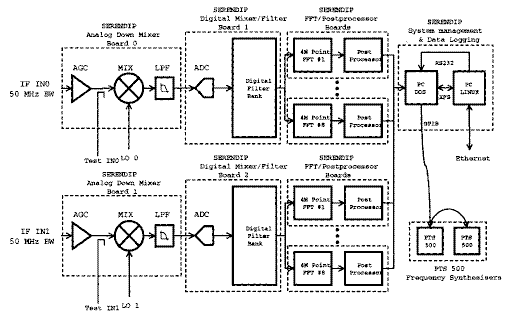
1998
| David Blair and Mario Zadnik also attempted what may have been the first optical SETI experiment in Australia using a custom filter on the 61 cm Lowell telescope at the Perth Observatory. No signals were detected. [ Blair & Zadnik, 2002 ] |
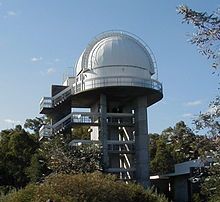
|
2000
Ragbir Bhathal undetakes optical SETI observations at the University of Western Sydney looking for nanosecond laser-type pulses. Two optical telescopes (0.4 m and 0.6 m) were used in coincidence to eliminate false signals. During its lifetime it observed 2000 F, G and K type southern stars and 30 southern globular clusters with several repeats. In December 2008 a sharp laser look-alike signal was detected apparently emanating from 47 Tucanae. However, further searches failed to detect the signal again. [ Bhathal, 2008 ]
2007
Hayden Rampadarath, as part of his PhD at the Curtin Institute of Radio Astronomy (CIRA), undertook the first Very Long Baseline Interferometry (VLBI) SETI. VLBI uses a network of many radio telescopes spaced over continental distances to give a very fine spatial reolution. This project targeted the planet Gliese 581d which was believed to be in the habitable zone of its parent star. The Australian Long Baseline Array was used to observe in the frequency range from 1230 to 1544 MHz.
No signals were observed during the 8 hour observation period. [ Rampadarath, Morgan, Tingay & Trott, 2012 ]
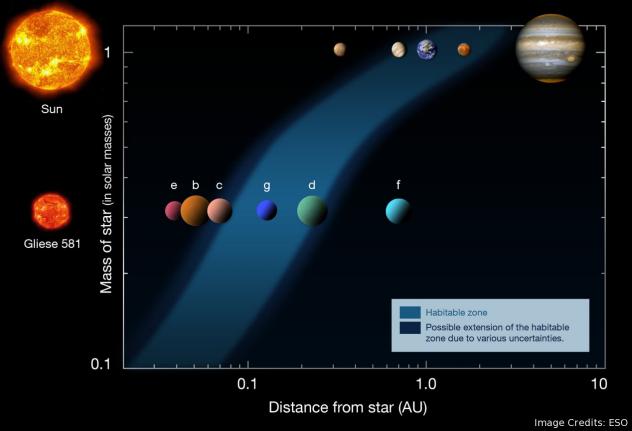
2014
The Murchison Widefield Array (MWA) was used to search in the frequency range 103 to 130 MHz for narrowband transmissions from
38 known planetary systems in widefield data over 115 minutes. Because of the extremely wide field of the MWA this is equivalent to around 100 times the amount of time that a conventional radio telescope would take to individually search all these star systems. No signals were found, but minimum limits could be placed on the effected radiated power that a civilisation would have to employ to have been detectable in this survey. And all such calculated limits exceed any directional transmitter power of any terrestrial system. [Tingay et al, 2016]
2016
The Breakthrough Listen project, coordinated from the University of California at Berkeley started observations at the Parkes radio telescope in November. Specially designed equipment that can sample large instantaneous bandwidths (up to 10 GHz) is attached to the back of the radio telescope. Data will be archived and made available for public searches.
AUSTRALIAN PEOPLE IN SETI
Many people have been and are involved in various aspects of SETI. In some cases the person who leads a project or who publishes the results is not the person who has done the most work. The list below is only a very small selection, and has been arranged in alphabetical order. In general the comments about each person are those relating to work in SETI or SETI related fields.
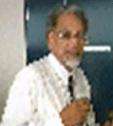 Ragbir Bhathal | Ragbir Bhathal carries out research in nanosecond laser pulsed communications (optical SETI), Astrophysics, and Astronomical image analysis and processing at the University of Western Sydney. He chaired an international conference on SETI in the 21st Century at UWS and was director of the SETI Australia Centre. |
 David Blair | David G. Blair is an Australian physicist and professor at the University of Western Australia and Director of the Australian International Gravitational Research Centre (AIGRC). Although his main interest lies in the detection of gravitational waves, he has had a continuing interest in SETI. He was involved in early radio and optical SETI projects. |
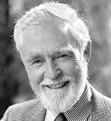 Ron Bracewell | Ron Bracewell worked on radar for CSIRO during WWII, then went to England where he received his PhD. He then came back and worked at CSIRO until 1954 when he went to the USA and held various positions at Stanford University. In 1978 he invented a spinning, nulling, two-element infrared interferometer which has applications in imaging exoplanets. Bracewell is also known for being the first to propose the use of autonomous interstellar space probes ('Bracewell probes') for communication between alien civilisations as an alternative to radio transmission dialogs. |
 Paul Davies | Paul Davies has held academic appointments at the University of Cambridge, University College London, University of Newcastle upon Tyne, University of Adelaide, Macquarie University and the Arizona State University. His research interests are in the fields of cosmology, quantum field theory, and astrobiology, and he is a prolific writer with many books to his credit. During his time in Australia he helped establish the Australian Centre for Astrobiology. In 2005, he took up the chair of the SETI: Post-Detection Science and Technology Taskgroup of the International Academy of Astronautics. |
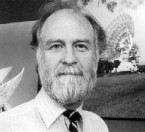 Ron Ekers | Ron Ekers, together with Trevor Cole, was the first group to perform a SETI search in Australia. He was also very active with later SETI searches using the Parkes radio telescope. |
 Ian Morrison | Ian S Morrison was the first Australian to be awarded a PhD (his second) in SETI. His thesis title was "Wideband Interstellar Signalling Models and Inferences for SETI". He now works at Swinburne University and lectures on the need to conduct wideband SETI searches. |
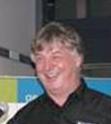 Ray Norris | Ray Norris is a British/Australian astronomer with CSIRO Astronomy & Space Science who researches how galaxies formed after the Big Bang. He currently leads an international project to image the faintest radio galaxies in the Universe, using the new ASKAP radiotelescope being built in Western Australia. He has a strong interest in SETI and has been involved in various SETI searches using the Parkes radio telescope. He is a most prolific writer and public lecturer on SETI and Aboriginal Astronomy. |
 Carol Oliver | Carol Oliver is Deputy Direction of the Australian Centre for Astrobiology at the University of New South Wales. She is heavily involved in science education, a SETI historian, a member of the NASA Astrobiology teams at MIT and Arizona State University, and a member of the IAA SETI Post Detection Taskgroup. |
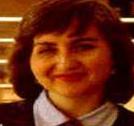 Bobbie Vaile | Roberta Anne 'Bobbie' Vaile (25 June 1959 – 13 November 1996) was an Australian astrophysicist and senior lecturer in physics at the University of Western Sydney (UWS). She was involved with Project Phoenix and influential in the establishment of the SETI Australia Centre, created at UWS in 1995. |
AUSTRALIAN SETI EVENTS
1993
Magic Frequencies - David Blair and Mario Zadnik [1993] published a list of possible frequencies that might be used for SETI.
Based on the 1420 MHz hydrogen line and the 1667 MHz hydroxyl line and on certain universal mathematically and physically significant scaling factors (eg 'π' and 'e'), a set of 55 possible interstellar communication frequencies was derived.
1994
SETI conference, "The Social Impact of SETI", University of Western Sydney, organised by Bobbie Vaile.
1998
49th International Astronautical Congress, Melbourne,
SETI Permanent Study Group - two sessions (1)Technical Studies,
(2)Social Studies.
1998
Establishment of the SETI Research and Community Development Institute in Queensland. Engages in SETI radio and optical searches with two 5 metre dishes and a 14" optical telescope.
1999
International SETI Conference, "SETI In the 21st Century" held at the University of Western Sydney, organised by Ragbir Bhathal and Carol Oliver. More than 100 delegates from around the world attended and there was a substantial media presence.
2002
IAU Symposium 213, "Bioastronomy: Life Among the Stars" held at Hamilton Island, Queensland, Great Barrier Reef resort. Ray Norris was the chair of the Science Organising Committee and Carol Oliver was the chair of the Local Organising Committee.
2009
METI - COSMOS magazine, the Australian Department of Innovation, Industry, Science and Research, CSIRO and NASA
cooperated to send a message toward the planet Gliese 581d on 28 August. The star Gliese 581 is a red dwarf in the constellation of Libra. This stellar system was chosen because it is believed that the planet Gleise 581d lies in the habitable zone of its primary. The project was titled "Hello From Earth" and received 25,878 messages that were bundled together and transmitted in the direction of the planet by the 70m radio communication dish at the NASA Deep Space Communication Station at Tidbinbilla near Canberra. The messages transmitted were collected from a wide range of Australians including high-level politicians and primary school children.
Before transmission the messages were sent as text files to the NASA JPL facility in California where they were encoded into binary, packaged and tested before their transmission from a 60 kW transmitter feeding the large dish at Tidbinbilla.

2013
Sponsored by the Australian Centre for Astrobiology,
the Australian Astrobiology Meeting was held at the University of New South Wales on 1st and 2nd of July.
2016
The Australasian Astrobiology meeting was held in the CSIRO ARRC building at Kensington, Western Australia. Sponsored by CSIRO and the Australian Centre for Astrobiology, the conference included papers on habitable planets and SETI. Randall Wayth from Curtin University spoke on the SETI programs of the MWA and SKA; Morris Jones spoke on the Fermi paradox; Ian Morrison spoke on Wideband SETI and the Spark@SETI project; Ray Norris spoke on machine learning and SETI search recognition; and Carol Oliver gave an historic overview of SETI in Australia.
2016
BREAKTHROUGH LISTEN - the next big step in SETI. Funded by Russian billionaire Yuri Milner to the amount of $100M over the next 10 years, the centre of operations is at the University of California, Berkeley Campus. Although time will be purchased on many radio telescopes, including the new Chinese 500 m FAST instrument, the two backbone telescopes of the project will be the 100 m steerable dish at Green Bank and the 70 m dish at Parkes, New South Wales. Operations at Parkes started in November 2016.
2017
International Astronautical Congress to be held in Adelaide.
ACRONYMS
ASKAP - Australian SKA pathfinder telescope
ATA - Allen Telescope Array (USA)
CIRA - Curtin (University) Institute of Radio Astronomy
CETI - Communication with Extraterrestrial Intelligence
ET - Extraterrestrial Intelligence
GHz - GigaHertz (one billion Hertz)
IAA - Internationl Astronautics Association
ICRAR - International Centre for Radio Astronomy Research
Jy - Jansky ( a unit of flux in radio astronomy)
METI - Messaging Extraterrestrial Intelligence
MHz - MegaHertz (one million Hertz)
MWA - Murchison Wide Field Array
oSETI - SETI by optical means
rSETI - SETI by radio
SETA - (the) Search for Extraterrestrial Artefacts
SETI - (the) Search for Extraterrestrial Intelligence
SKA - the Square Kilometer Array
SMC - Small Magellenic Cloud
UWA - University of Western Australia
UWS - University of Western Sydney
VLBI - Very Long Baseline Interferometry
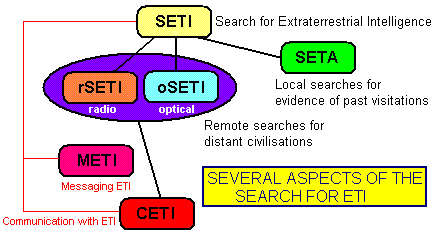
REFERENCES
RN Bracewell, 1974, The Galactic Club: Intelligent Life in Outer Space, Portable Stanford: Alumni Association
Peter Robertson, 1992, Beyond Southern Skies - Radio Astronomy and the Parkes Radio Telescope, Cambridge University Press.
PCW Davies, 1995, Are We Alone? - Philosophical Implications of the Discovery of Extraterrestrial Life, Basic Books (New York)
Paul Davies, 2010, The Eerie Silence, Allen Lane [Penguin]
TW Cole and RD Ekers, 1979, "A Survey for Sharply Pulsed Emissions", Proc. Astron. Soc. Aust., 3, pp328-330.
DG Blair, RP Norris, KJ Wellington, A Williams & AE Wright, 1990, “A Test for Interstellar Contact Channel Hypothesis in SETI”, Bioastronomy: the Search for Extraterrestrial Life - the Exploration Broadens. Proc. 3rd Int. Symp. on Bioastronomy, Val Cenis, Savoie, France, 18-23 June 1990, pp 271-279.
David Blair, David & MG Zadnik, 1993, “A List of Possible Interstellar Communication Channel Frequencies for SETI”, Astronomy and Astrophysics, 278, pp 669-672.
RP Norris, 1993, “Is There Anybody Out There”, Current Affairs Bulletin, 70(October), 12.
DG Blair, 1995, "The Interstellar Contact Channel Hypothesis: When Can We Expect to Receive Beacons?", 1993 Bioastronomy Symposium. Progress in the Search for Extraterrestrial Life ( San Francisco ), 74, pp 267-273.
RP Norris, 1996, “SETI and Basic Science”, Sydney Morning Herald, Monday 8 April.
Seth Shostak, Ron Ekers, Roberta Vaile, 1996, “A Search for Artificial Signals from the Small Magellanic Cloud”, The Astronomical Journal, 112, pp164-166.
RP Norris, 1997, “Extragalactic SETI and the UWS/ATNF/Serendip Project”, IAA-97 (IAA.9.1) Acta Astronautica (unpublished volume).
MG Zadnik, J Winterflood, AJ Williams, KJ Wellington, R Vaile, DG Blair, JC Tarter, PR Backus, RP Norris, G Heiligman, 1997, “Interstellar Communication Channel Search of 49 Stars Closer than 11.5 PC”, Astronomical and Biochemical Origins and the Search for Life in the Universe, Bologna, Italy, pp 657-660.
RP Norris, 1999, “How Old is ET?”, IAA-99 (IAA.9.1.05) Acta Astronautica, 47, 731.
RP Norris, 2000, “How Old is ET?”, When SETI Succeeds: The impact of high-information Contact (ed. A. Tough), Foundation for the Future ( Washington DC)
FH Stootman, AY De Horta & C Oliver, 2000, "The Southern SERENDIP Project", A New Era in Bioastronomy, ASP Conference Series, 213, pp491-496.
R Bhathal , 2000, “The Case for Optical SETI”, Astronomy & Geophysics, 41(1), pp25-26.
SA Kingsley and R Bhathal (eds), 2001, The Search for Extraterrestrial Intelligence (SETI), in the Optical Spectrum III, SPIE (Washington).
DG Blair and MG Zadnik, 2002, “A Search for Optical Beacons: Implications of Null results”, Astrobiology, 2, pp 305-312.
RD Ekers, DK Cullen, J Billingham & LK Scheffer, 2002, SETI 2020: A Roadmap for the Search for Extraterrestrial Intelligence, SETI Press, Mountain View (California).
Ray P Norris, 2004, “How to Respond to a SETI Detection”, Bioastronomy 2002: Life Among the Stars, Proceedings of IAU Symposium #213 (edited by R. Norris, and F. Stootman), Astronomical Society of the Pacific (San Francisco, 2004), p 493
RP Norris, F Stootman (eds), 2004, Bioastronomy 2002: Life Among the Stars, Proceedings of IAU Symposium #213, Astronomical Society of the Pacific (San Francisco).
R Bhathal, 2008, “Microwave and optical SETI searches”, Australian Institute of Physics (AIP) 18th National Congress, Adelaide, South Australia.
S Tingay, 2008, "Square Kilometre Array", Australian Physics, 45, pp80-83.
R Bhathal, 2008, “Searching for ETI”, Journal and Proceedings of the Royal Society of New South Wales, 141, pp 33 - 37.
R Bhathal, 2010, "The Australian Optical SETI Project", Astrobiology Science Conference, League City, Texas.
Carol Oliver, 2010, "SETI in Australia: Past, Present and Future", AAAS Meeting, San Diego, February.
Ian S Morrison, 2011, "Evaluation of Symbol-Wise Autocorrelation for the SetiQuest Project", Seti Institute publication, available as a PDF (1.6 MB).
R Bhathal, 2011, "The OZ OSETI Project", in Communication with Extraterrestrial Intelligence, State University of New York Press.
H Rampadarath, JS Morgan, SJ Tingay & CM Trott, 2012, "The First Very Long Baseline Interferometric SETI Experiment", The Astronomical Journal, 144(2), 38.
Ian S Morrison, 2012, "Detection of antipodal signalling and its application to wideband SETI", Acta Astronautica special issue: Papers presented at the Second IAA Symposium on Searching For Life Signatures (SETI), Buckinghamshire, UK, 6-8 October 2010 / John R. Elliot (ed.), 78, pp90-98
David G Messerschmitt & Ian S Morrison, 2012, "Design of interstellar digital communication links: Some insights from communication engineering", Acta Astronautica special issue: Papers presented at the Second IAA Symposium on Searching For Life Signatures (SETI), Buckinghamshire, UK, 6-8 October 2010 / John R. Elliot (ed.), 78, pp80-89
Ian S Morrison, 2013, "Introduction to Wideband SETI", SKA Cradle of Life Science Assessment Workshop, Jodrell Bank.
Ian S Morrison & Michael G Gowanlock, 2015, "Extending Galactic Habitable Zone Modeling to Include the Emergence of Intelligent Life", Astrobiology, 15(#8), pp683-696.
Carol Oliver & Ian Morrison, 2015, "The Cradle of Life: A Cosmic Search for Ourselves, Australasian Science, 36(#6), pp34-36.
SJ Tingay, C Tremblay, A Walsh & R Urquhart, 2016, "An Opportunistic Search For Extraterrestrial Intelligence (SETI) with the Murchison Widefield Array", Astrophysical Journal Letters, 827:L22, 5pp.
R Wayth, 2016, "Astrobioloigy and SETI with the MWA and SKA Radio Telescopes", Australasian Astrobiology Meeting, Perth
I Morrison & G MacIntosh, 2016, "Wideband SETI and the Spark@SETI Project", Australasian Astrobiology Meeting, Perth
C Oliver & K Dougherty, 2016, "SETI Research in Australia: A Brief History", Australasian Astrobiology Meeting, Perth

 Australian Space Academy
Australian Space Academy